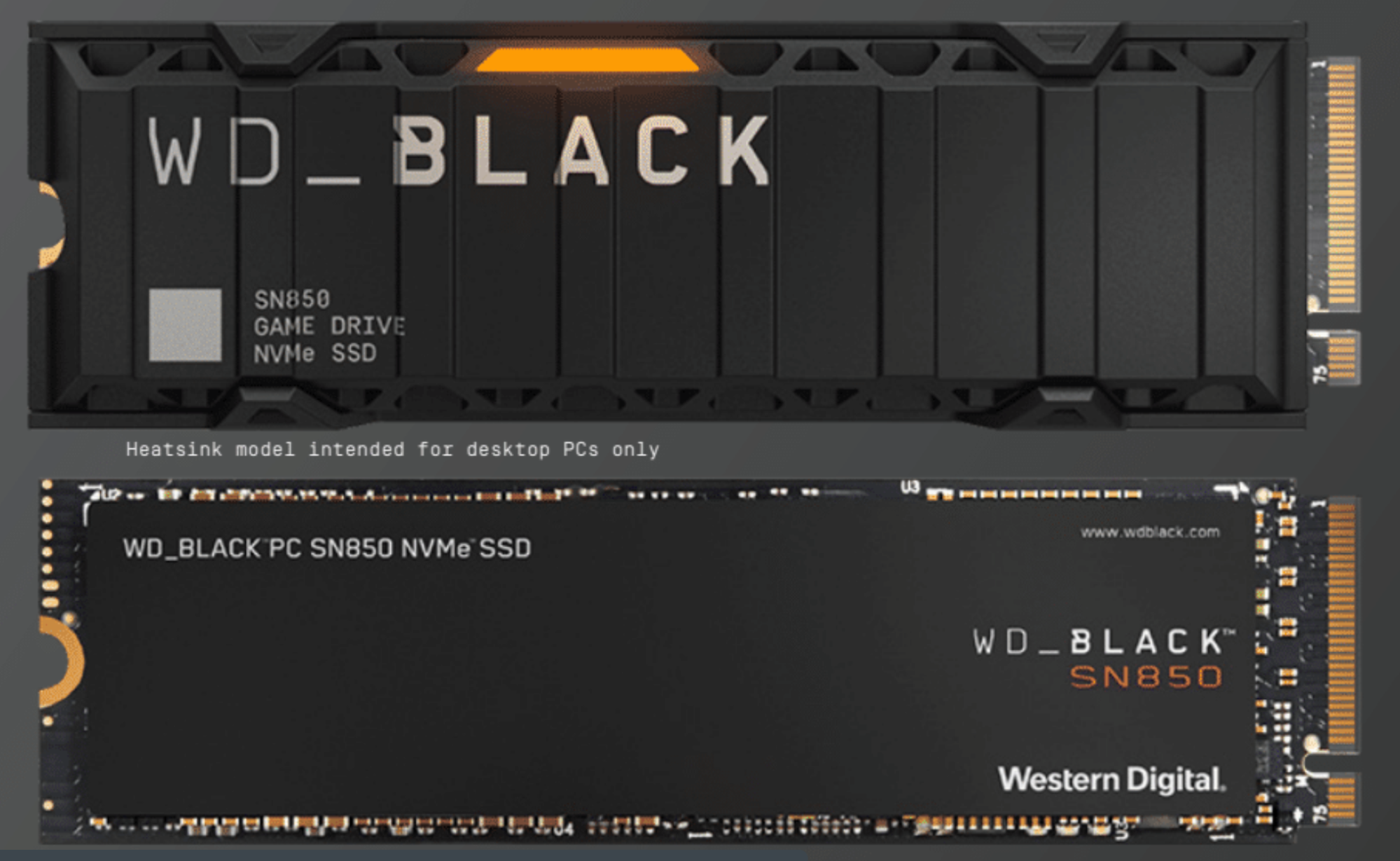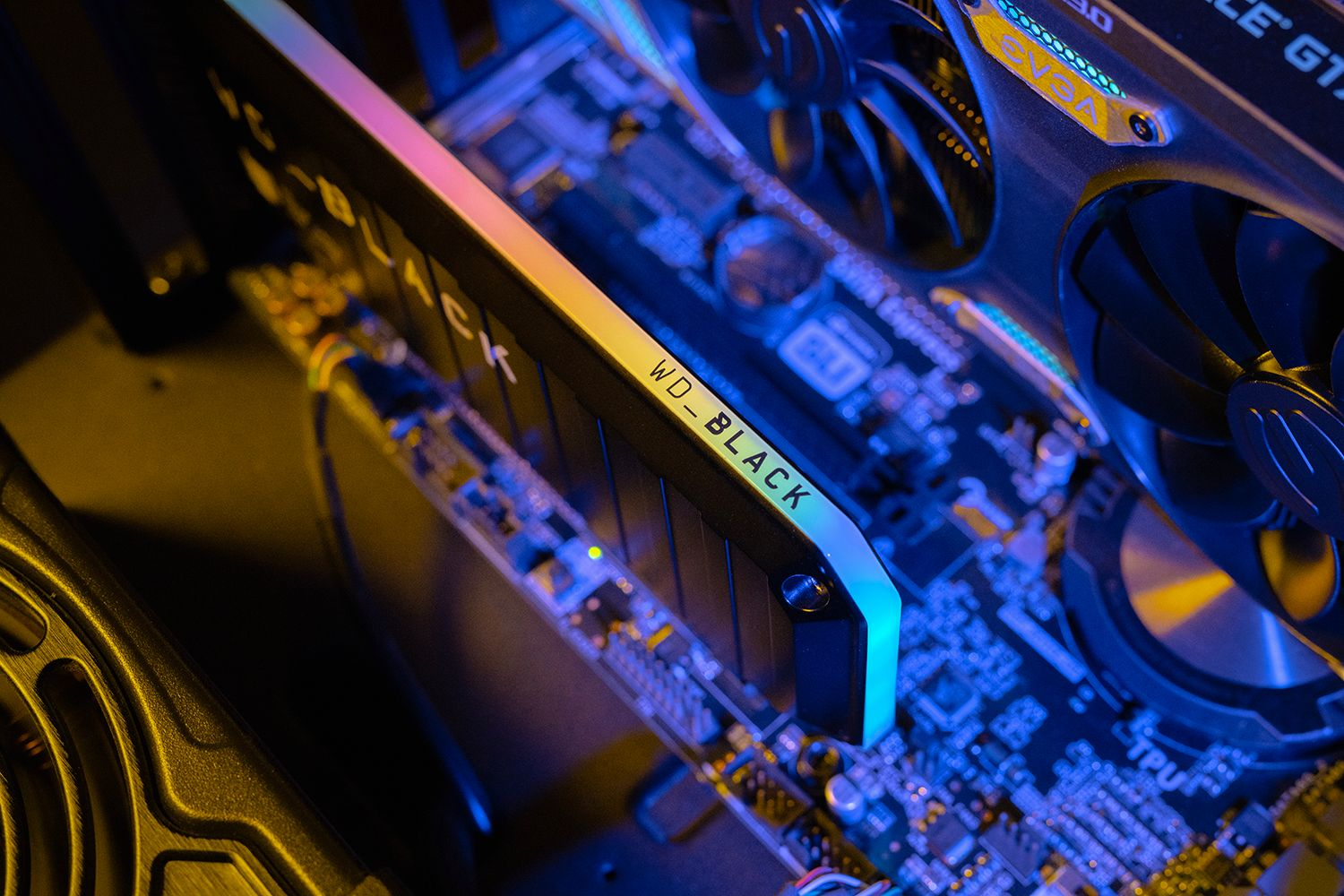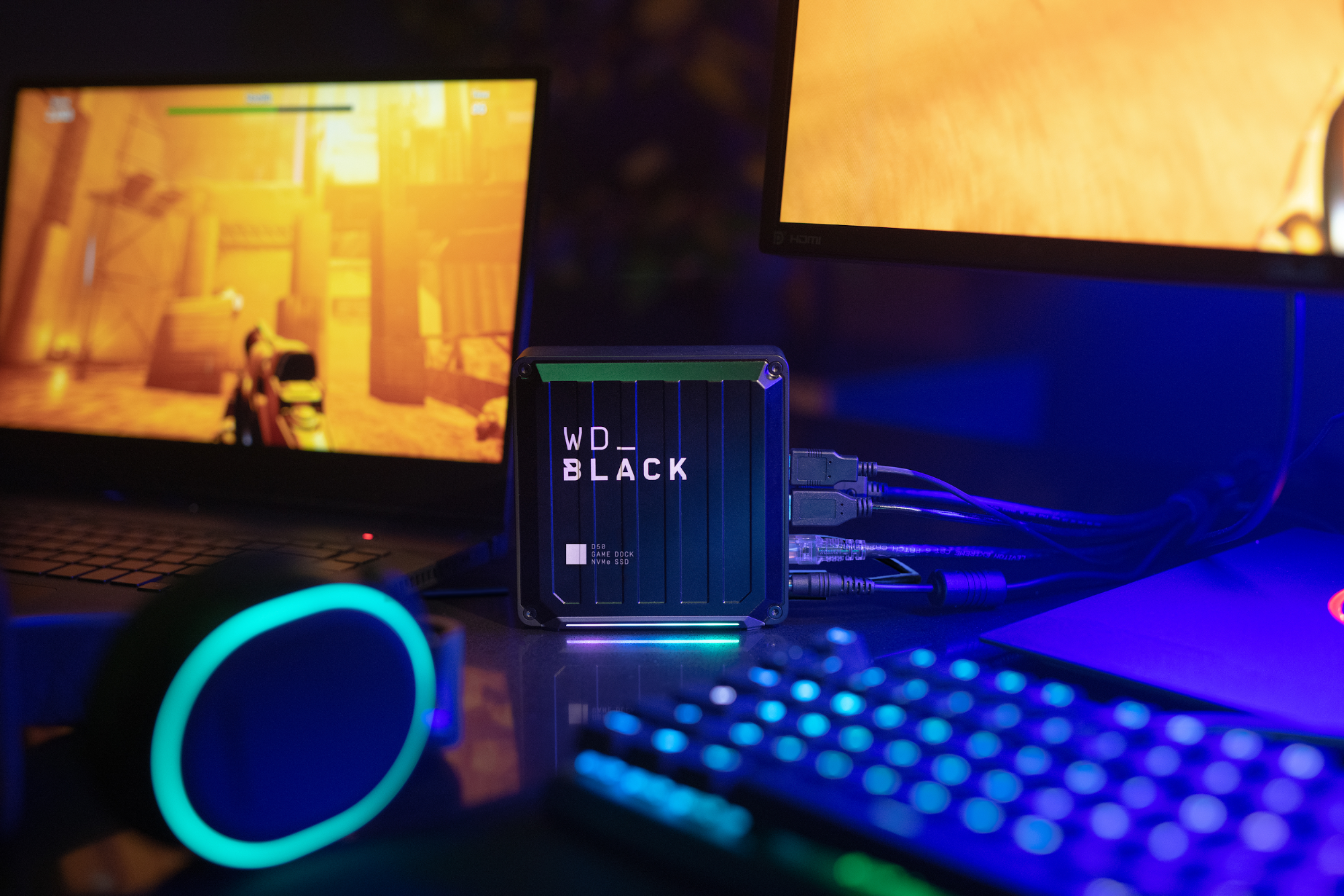WD Announces SN850 PCIe 4 SSD, Dual-Drive Add-in Card, D50 Game Dock
Fast speeds meet more RGBs
Update 10/8/20 7:30am PT: This story has been updated to insert details on the RAID controller used in the AN1500, as well as correct pricing for that product.
Western Digital today announced a trio of new products for its WD Black gaming brand, its first PCIe 4.0 M.2 drive, the SN850; an AN1500 PCIe add-in card that approaches PCIe 4.0 speed thanks to a pairing of two 3.0 drives in RAID0; and a D50 Thunderbolt 3/4 gaming dock with customizable RGB lighting.
The WD Black SN850 is a PCIe 4.0 SSD that promises speeds of up to 7GBps, 1 million IOPS, and familiar capacities of 500MB ($150), 1TB ($240) and 2TB ($480). As with the SN750 before it, the drive will ship first without a heatsink, then a version with a heatsink (and some RGB lighting) sometime in the first quarter of next year, according to the company.
WD isn’t sharing much in the way of architectural details yet, but a representative told us that the in-house controller has been optimized for improved SLC management and low queue depth performance -- the latter being the kind of workloads that games and most mainstream tasks entail. Sequential read speeds are listed at 7GBps for all capacities, with sequential writes listed as 4.1GBps for the 500GB model, 4.3 for the 1TB version and 5.1GBps for the top-capacity model. IOPS is reported at 1 million, and the drive ships with a five-year warranty.
For those who don’t yet have a PCIe 4.0 motherboard but still want blazing speed, the company’s AN1500 NVMe is an add-in card that pairs two included PCIe Gen 3 SSDs in RAID0 to achieve rated sequential read/write speeds of 6.4/4.1GBps, respectively. The AN1500 is bootable, has an integrated heatsink to prevent throttling during sustained loads, and incorporates 16 RGB LEDs around the edge of the card, with 13 lighting effects.
The AN1500 will be offered in 1TB ($299), 2TB ($549), and 4TB ($999) capacities, and also has a five-year warranty. The card uses enterprise grade Marvell 88NR2241 NVMe RAID controller.
Last up for the new WD Black products is the D50 Game Dock NVMe. As its name implies, it’s a Thunderbolt 3/4 dock that the company will sell for $320 empty, $499 with a 1TB SSD, or $680 for the 2TB model. Those prices are steep, but you get customizable RGB lighting, 87 watts of charging, and quite a few handy ports for that price.
Note that the Ethernet port is just Gigabit, which is frustrating for those who want to future- proof. But it’s unlikely many laptop owners have both a faster Ethernet port and the requisite hardware to take advantage of it at this point.
The dock, with feature active cooling to make sure performance doesn’t throttle, and if you opt for a version with a pre-installed drive, WD says you can expect sequential read/write performance up to 3GBps/2.5GBps, respectively.
As with the other products, the D50 ships with a five-year warranty. And as with the other RGB-equipped models above, the company says you’ll be able to control the pretty lights either via the company’s own WD_Black Dashboard software, or with the usual retinue of RGB software suites, from the likes of Razer, Asus, MSI, and Gigabyte.
Most of the new WD Black devices will be available this month, save for the cooler-equipped SN850, which the company says will arrive sometime in the first three months of 2021.
Get Tom's Hardware's best news and in-depth reviews, straight to your inbox.
After a rough start with the Mattel Aquarius as a child, Matt built his first PC in the late 1990s and ventured into mild PC modding in the early 2000s. He’s spent the last 15 years covering emerging technology for Smithsonian, Popular Science, and Consumer Reports, while testing components and PCs for Computer Shopper, PCMag and Digital Trends.
-
salgado18 Replyand low queue depth performance -- the latter being the kind of workloads that games and most mainstream tasks entail
I have a feeling that, once next-gen games start to come, and DirectStorage is used in full, games will need high queue depth. Maybe not quite a smart move, but it's also just a guess. -
seanwebster Reply
I doubt it. Even after hammering most high-end SSDs with up to 8-10 large transfers at once, they rarely exceed a QD of 5-6 at most. The drives respond so fast that they stay well with a QD range of 0-4 under most circumstances, even for enthusiasts.salgado18 said:I have a feeling that, once next-gen games start to come, and DirectStorage is used in full, games will need high queue depth. Maybe not quite a smart move, but it's also just a guess. -
salgado18 Reply
But then you could load every asset of a game scene in parallel, including sound, textures, models etc. A game scene can use hundreds of textures alone, so that can potentially throw the queue depth to the limits of the drive. I believe that's what the PS5 and XBsX do, and PC games will soon do too.seanwebster said:I doubt it. Even after hammering most high-end SSDs with up to 8-10 large transfers at once, they rarely exceed a QD of 5-6 at most. The drives respond so fast that they stay well with a QD range of 0-4 under most circumstances, even for enthusiasts.






